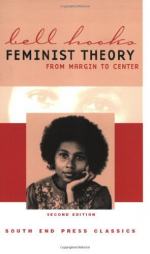
|
| Name: _________________________ | Period: ___________________ |
This quiz consists of 5 multiple choice and 5 short answer questions through Chapter 1.
Multiple Choice Questions
1. In the Preface to the second edition, what is the first factor considered by black parents when a child is born, according to the author?
(a) Race, then gender.
(b) Gender, then size.
(c) Race, then size.
(d) Gender, then race.
2. How does the author view women's desires and attempts to be like white men?
(a) She thinks that it is acceptable for white women but not for black women.
(b) She believes that it is the only way fro women to gain credibility and power in society.
(c) She refrains from commenting because she doesn't want to appear judgmental.
(d) She disagrees strongly with this definition of feminism because it sustains the current patriarchal system.
3. How has the author's own perception of her book held up?
(a) She comments that the book's theories are still sound, still relevant, and easily understandable by contemporary readers from all walks of life.
(b) She believes that her ideas are too radical.
(c) She feels that a lot of her theories are now outdated.
(d) The theories in the book do not have a mass appeal.
4. According to the author, how did early feminists see gender?
(a) As the sole determinant of a woman's fate.
(b) As less important than race.
(c) As a form of empowerment.
(d) As less important than class.
5. The phrase "suffering cannot be measured and compared quantitatively" comes from which of the following authors?
(a) Rita Mae Brown.
(b) Betty Friedan.
(c) Benjamin Barber.
(d) Leah Fritz.
Short Answer Questions
1. For the author, which two main terms had been left out of feminist discussions when she first published her book?
2. Overall, what does the author think about the effects of the feminist movement?
3. What were black women mostly encouraged to talk about in the early days of the feminist movement.
4. In general, the title of Chapter 1, "Black Women - Shaping Feminist Theory," relates to which of the following ideas?
5. "The problem that has no name" is a quotation by which author?
|
This section contains 454 words (approx. 2 pages at 300 words per page) |

|




